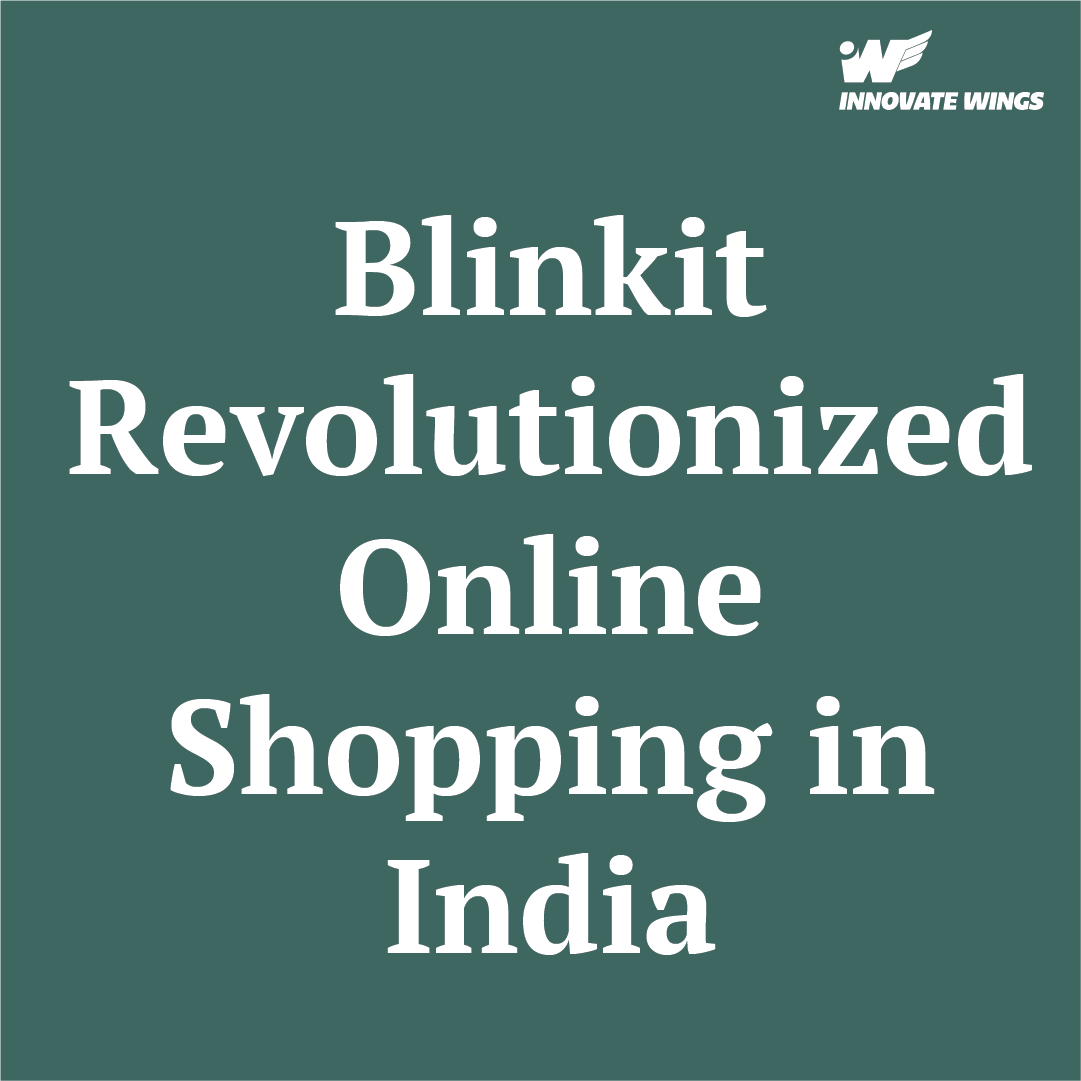

In recent years, the online shopping and digital marketing landscape in India has undergone a radical transformation, and Blinkit has played a key role in this shift. By embracing the concept of Quick Commerce (Q-commerce), Blinkit has redefined convenience, delivering groceries and essentials at unprecedented speeds. As a result, Blinkit has created a new dependency among users, making it an integral part of their daily routines.
Blinkit’s Radical Shift: From E-commerce to Q-commerce
Blinkit’s journey from Grofers to Blinkit in 2021 was more than just a rebranding, it marked a shift from the traditional e-commerce and digital marketing model to the faster, more efficient Q-commerce model. Traditional e-commerce companies often required 1–3 days for delivery, but Blinkit set out to reduce delivery times to under 30 minutes. According to a report by RedSeer, a strategy consultant firm, the Q-commerce industry in India is projected to grow to $10 billion by 2025, demonstrating how crucial this shift has been to the broader retail landscape.
Blinkit’s Focus on Speed: Changing Shopping Habits
Blinkit’s promise of fast deliveries has fundamentally shifted how people view online shopping. In 2024, Blinkit processed over 100 million orders, with the average delivery time falling between 10-20 minutes. This speed is something that traditional e-commerce platforms cannot match. The demand for fast deliveries is evident in Blinkit’s growth: as of late 2024, the platform has expanded to 44+ cities and serves over 32 million active users.
The concept of instant delivery has tapped into the modern consumer’s need for immediate gratification, a trend that has become more prominent in the age of smartphones and social media. Research from Eearnet & Young found that 40% of urban consumers in India prefer quick deliveries and are more likely to make repeat purchases from platforms that offer this service.
Convenience at Its Core: Making Blinkit a Daily Habit
Blinkit’s ultra-fast delivery model has made it indispensable for many consumers, especially those living in metro cities. According to a survey by The Hindu, around 60% of Blinkit users reported relying on the platform for at least 3-4 deliveries per week, highlighting how embedded Blinkit has become in daily routines. This habit-forming behavior is reinforced by the convenience factor: consumers no longer have to plan a trip to the grocery store or wait days for an order to arrive. With Blinkit, a bottle of milk, a loaf of bread, or last-minute snacks can be delivered in under 20 minutes.
Blinkit’s dark store model—small, local warehouses near urban centers—has been key to maintaining this speed. By locating these dark stores close to where customers live, Blinkit can fulfill orders quickly and affordably, without the delays caused by large, centralized fulfillment centers. As of 2023, Blinkit has more than 639 dark stores across major Indian cities, making it one of the largest Q-commerce networks in the country.
Turning Convenience into Dependency
The service has become so integrated into daily life that many users now prefer it over traditional supermarkets. According to a 2022 KPMG report, 70% of Indian consumers reported using Q-commerce platforms like Blinkit for groceries, reflecting a growing reliance on these services. For these users, Blinkit is no longer just a shopping platform—it has become a necessity. A study by Nielsen found that nearly 80% of Blinkit customers now choose to make their purchases through the app rather than going to physical stores, further demonstrating the platform's growing dominance. The rapid adoption of Blinkit is changing the landscape of grocery shopping, where speed, convenience, and affordability are increasingly more important than the experience of physically browsing a store.
Blinkit’s Growing Reach and Expansion
Blinkit’s rapid growth can be attributed not just to its delivery speed but also to its ability to scale. As of 2024, Blinkit has expanded its operations to over 44 cities, including tier-1 and tier-2 cities like Delhi, Mumbai, Bengaluru, Pune, and Chennai. With over 32 million active users, Blinkit has successfully carved out a space in the highly competitive e-commerce market.
The company’s ability to expand its reach and maintain quick deliveries in diverse urban environments has set it apart from traditional grocery delivery services. Blinkit has also raised significant funding to fuel its expansion; in 2022, Blinkit raised $120 million in a funding round led by Zomato, bringing its total valuation to $1 billion. This financial backing has allowed Blinkit to enhance its technology, increase its delivery fleet, and open more dark stores, making it even more accessible to urban consumers.
The Psychology of Instant Gratification
Blinkit has tapped into the deep-seated desire for instant gratification, which has become a significant driving force in modern shopping behaviors. As more people embrace on-demand services in every aspect of their lives—from food delivery to entertainment—Blinkit provides a shopping solution that caters to this need. Over time, Blinkit’s customers have become accustomed to its rapid deliveries, making it an integral part of their routines. This dependency on Blinkit’s fast, reliable service has made it the preferred choice for grocery shopping, especially in busy urban environments where time is scarce.
The Blinkit Effect
Blinkit’s evolution into a Q-commerce giant has fundamentally changed online shopping in India. Its focus on ultra-fast deliveries, local fulfillment centers, and a seamless app experience has made it a go-to platform for millions of urban consumers. As more people depend on Blinkit for their daily essentials, the platform has transformed from a mere convenience to a necessity, tapping into the growing demand for instant gratification. The speed at which Blinkit delivers and the ease it offers have made it a key player in India’s evolving retail landscape—one that is shaping how we shop in the digital age.